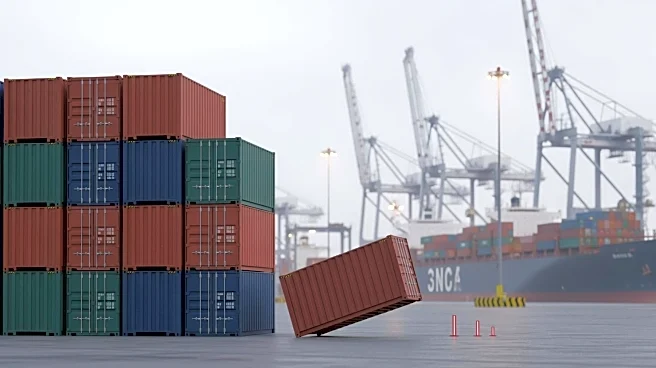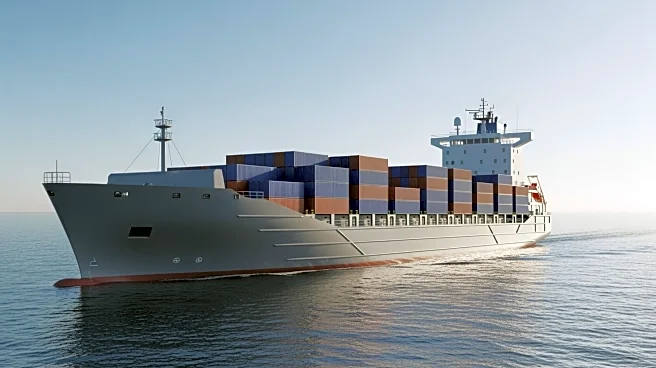What's Happening?
The Conference Board has forecasted a slowdown in the U.S. economy due to the impact of tariffs, although it does not anticipate a recession. The organization had previously predicted a 1.2% drop in the U.S. gross domestic product due to tariffs. Despite
this, there are signs of economic resilience, such as a surge in manufacturing construction driven by onshoring and the CHIPs Act. However, the uncertainty surrounding tariffs and a slowing global economy pose challenges. The Conference Board notes that more than 70% of U.S. CEOs plan to alter their supply chains in the coming years, although onshoring requires significant investment and time.
Why It's Important?
The economic slowdown predicted by The Conference Board could have significant implications for various U.S. industries. While some sectors like finance, insurance, and legal services might benefit from higher tariffs, others such as retail, wholesale trade, and manufacturing could face challenges. The shift towards onshoring and the resulting increase in manufacturing construction could bolster domestic production, but the long-term success of these efforts depends on overcoming challenges related to labor costs, infrastructure, and global economic conditions. The potential slowdown in consumer spending, particularly among lower-income households, could further impact economic growth.
What's Next?
The upcoming holiday shopping season will be a critical indicator of the U.S. economy's health, as consumer spending patterns will reflect broader economic trends. Businesses and policymakers will need to navigate the uncertainties of tariff impacts and global economic conditions. The ongoing adjustments in supply chains and manufacturing strategies will require careful planning and investment to ensure long-term economic stability and growth.
Beyond the Headlines
The tariff-induced economic changes highlight the complex interplay between global trade policies and domestic economic strategies. The move towards onshoring reflects a broader trend of seeking economic resilience and self-sufficiency, but it also underscores the challenges of adapting to a rapidly changing global economic landscape. The potential for increased manufacturing and infrastructure development could lead to job creation and economic revitalization in certain regions, but these benefits must be balanced against the risks of increased costs and economic volatility.














